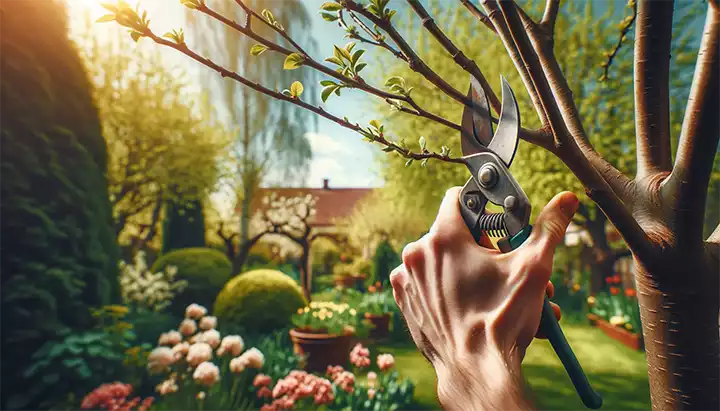Pruning is a vital aspect of gardening, ensuring the health and structure of trees and shrubs. It requires a delicate balance of skillful cuts and an understanding of plant biology for optimal results. Let’s delve into the key techniques and principles of pruning:
Understanding Growth Buds:
- Apical Dominance: Growth primarily occurs from the terminal bud, suppressing lateral bud growth. This dominance varies by species and impacts lateral shoot development.
- Growth Patterns: Limb orientation influences apical dominance. Vertical limbs exhibit strong dominance, while horizontal limbs lose it, often resulting in water sprouts.
Removing Heavy Branches:
- Cutting Technique: Begin with an undercut to prevent bark tearing, followed by a top cut and a final cut close to the branch collar to promote healing.
General Pruning Process:
- Timing: Prune during dormancy in winter or early spring. Flowering shrubs should be pruned after blooming to preserve next season’s buds.
- Evergreens and Fruit Trees: Prune evergreens in early spring for optimal growth. Fruit trees benefit from crown-opening pruning to enhance light penetration and fruit production.
- Roses: Prune in spring, cutting back to healthy wood above an outward-facing bud.
Pruning Techniques:
- Thinning: Remove entire shoots to maintain apical dominance and encourage growth at undisturbed tips.
- Water Sprouts and Suckers: Remove to prevent energy drain and direct growth.
- Renewal Pruning: Foster air circulation and light penetration, particularly in older trees.
- Crotches and Angles: Eliminate limbs with narrow crotches to prevent weakness and damage.
Healing and Regrowth:
- Healing: Pruning initiates healing in the cambium layer. Cut close to the main branch without harming the bark ridge or collar for faster recovery.
- Regrowth: Pruning stimulates regrowth near the cut, with more severe pruning resulting in greater regrowth to restore balance.
In essence, pruning transcends mere cutting; it involves a deep understanding of plant biology and growth patterns. Proper pruning not only promotes healthy growth and aesthetics but also prevents disease and damage, ensuring the longevity and vitality of your garden’s greenery.
